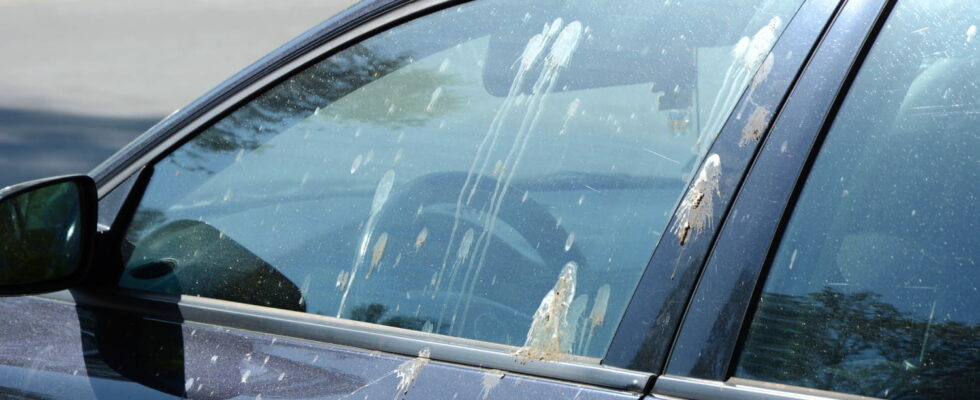Never do this to clean bird droppings that have fallen on the body of your car.
And sh…! Cambronne’s word is the most appropriate reaction when a motorist discovers bird droppings, often whitish, on the bodywork of his vehicle. No one really wants to clean up the droppings of a pigeon or a blackbird before getting behind the wheel. However, it is strongly recommended to remove these excrements as quickly as possible. The fault lies in the acidic components of bird droppings that can chemically react with the varnishes and paints used on cars. These reactions can cause changes in color, stains or even erosion of the painted surface. And the longer the droppings remain on the car, the more likely they are to cause damage.
Not to mention the fact that they are more difficult to remove once dry. However, you should not act in haste at the risk of regretting it later. The first reflex when you want to clean a stain is to take a sponge and rub on the stain. Have you ever done it on bird droppings? If so, it is very likely that the result was not satisfactory. The fecal matter quickly becomes embedded in the bodywork, especially when it is hot, and is not easy to remove. This is often the moment when we commit the guilty gesture of turning our sponge over and using its green side.

The green side of a sponge is usually designed to be more abrasive than the yellow side, which is softer and more porous. And since it is quite effective at removing stubborn dirt from kitchen utensils, such as pots and pans, why not use it to get rid of bird droppings? Indeed, it works. By rubbing vigorously, the stain will eventually come off. The problem is that it is not the only thing that will come off. The clear varnish, which generally covers the paint of cars, does not resist the use of the abrasive side of the sponge. The rubbed area is then no longer shiny but dull, which contrasts with the rest of the bodywork. Worse, the first coat of paint may also have been damaged, in which case scratches appear where the bird droppings were.
Fortunately, the situation is not irreversible. But it can be expensive. When the damage is visible, the best solution is to use a polish intended for car body maintenance. You can find good quality ones for around fifteen euros in stores. The abrasive side of the product allows you to chip away at a thin layer of paint to reveal the next layer, which will give the vehicle a new appearance. The operation is, however, quite delicate because you have to rub evenly on the paint with a polishing cloth to obtain a good result. If you are not sure of yourself, and do not want to take the risk of making the situation worse, a bodywork specialist will know how to restore the beautiful shine to your car’s paint. Your wallet will also take on a shine: the hourly rate for removing scratches varies between 50 and 80 euros with a professional.
